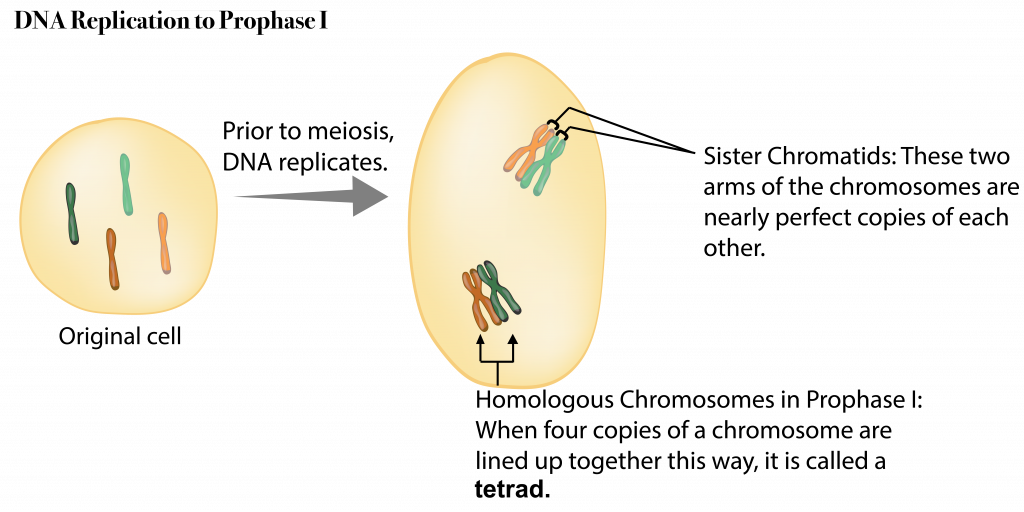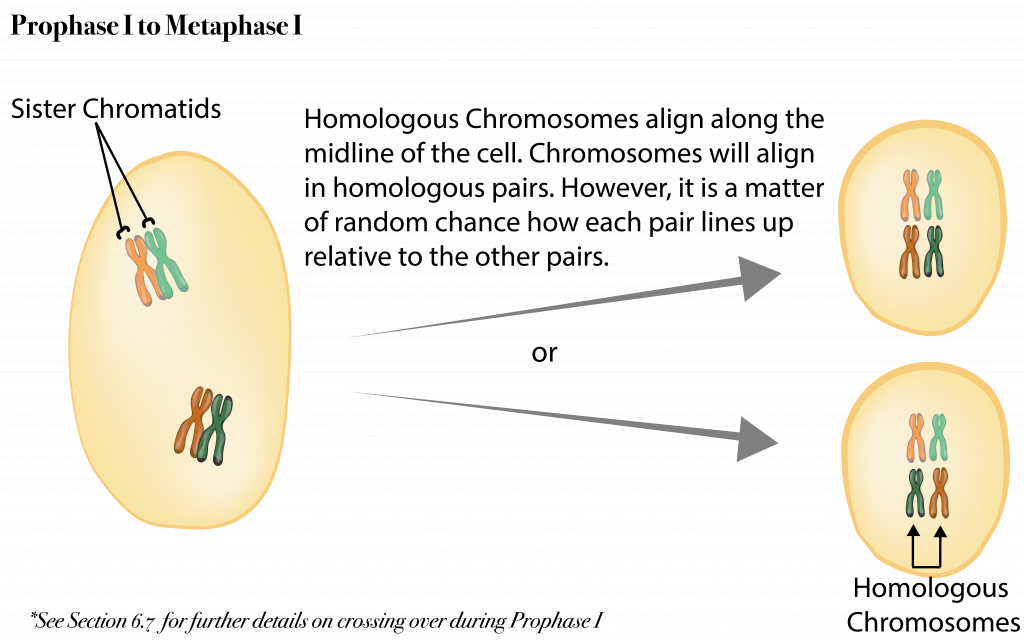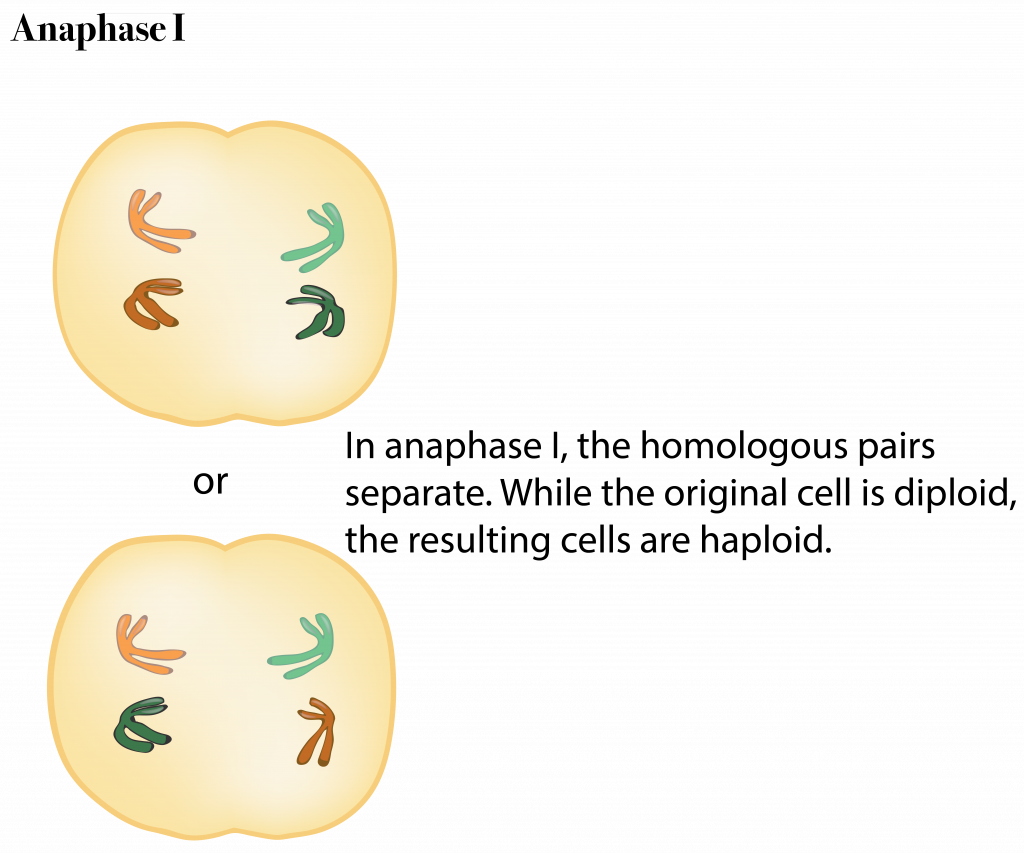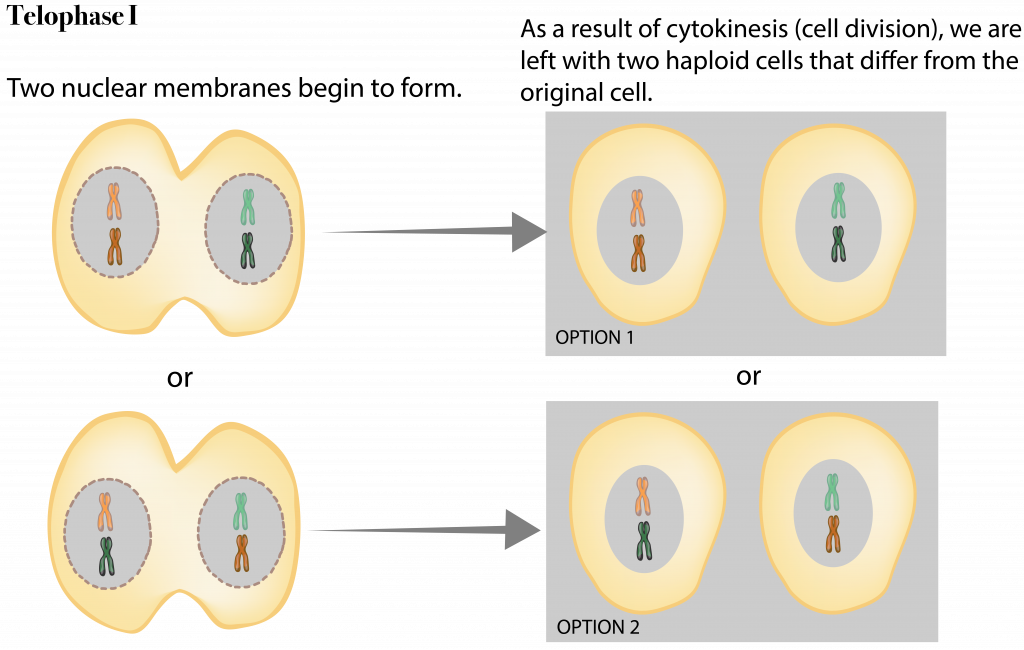6.5 Meiosis I
While mitosis involves one cell division, forming two cells from one original cell, meiosis involves two full cell divisions, forming 4 cells from one original cell. We call these two divisions meiosis I and meiosis II. Like in mitosis, meiosis begins after all of the DNA on all of the original cell’s chromosomes has replicated. The chromosomes then condense into chromatid pairs or sister chromatids.
PROPHASE I. Meiosis is initiated in a stage called prophase. In prophase of the first meiotic division (prophase I), each of the chromosomes in the cell comes together with its homologue, forming structures called tetrads (the ‘tetra’ refers to the 4 chromatids of each duplicated homologous pair).

METAPHASE I. In metaphase I, half the genetic identity of the potential offspring is determined. Specifically, all the homologous chromosome pairs, the tetrads, align in the middle of the cell. How they separate in the next stage is key.

ANAPHASE I. In anaphase I, each pair of homologues is pulled apart, with the chromatid pairs still intact, to assort to opposite sides of the original cell. The cell will cleave in the middle during telophase I & cytokinesis, forming two cells. Which of the chromatid pairs (paternal or maternal) go to each newly formed cell is a random function, depending simply on how the homologous pairs lined up during metaphase.

Each new cell formed at the end of meiosis I will only inherit a chromatid pair from a single parent. Independent assortment is a term used to describe the process in which the homologous pairs divide into the daughter cells randomly. Given that humans have 23 pairs of chromosomes that can assort randomly, after this simple division there are 223, or over 8 million, possible combinations of chromosomes. The resulting sex cells are each a random mixture of both parents’ chromosomes. Independent assortment is a major generator of genetic diversity, and a process that is unique to sexually reproducing organisms.
TELOPHASE I & CYTOKINESIS I. The first meiotic division concludes with telophase I and cytokinesis I. During telophase I, two nuclear membranes form and during cytokinesis, the cell will cleave in the middle to form two haploid cells.


